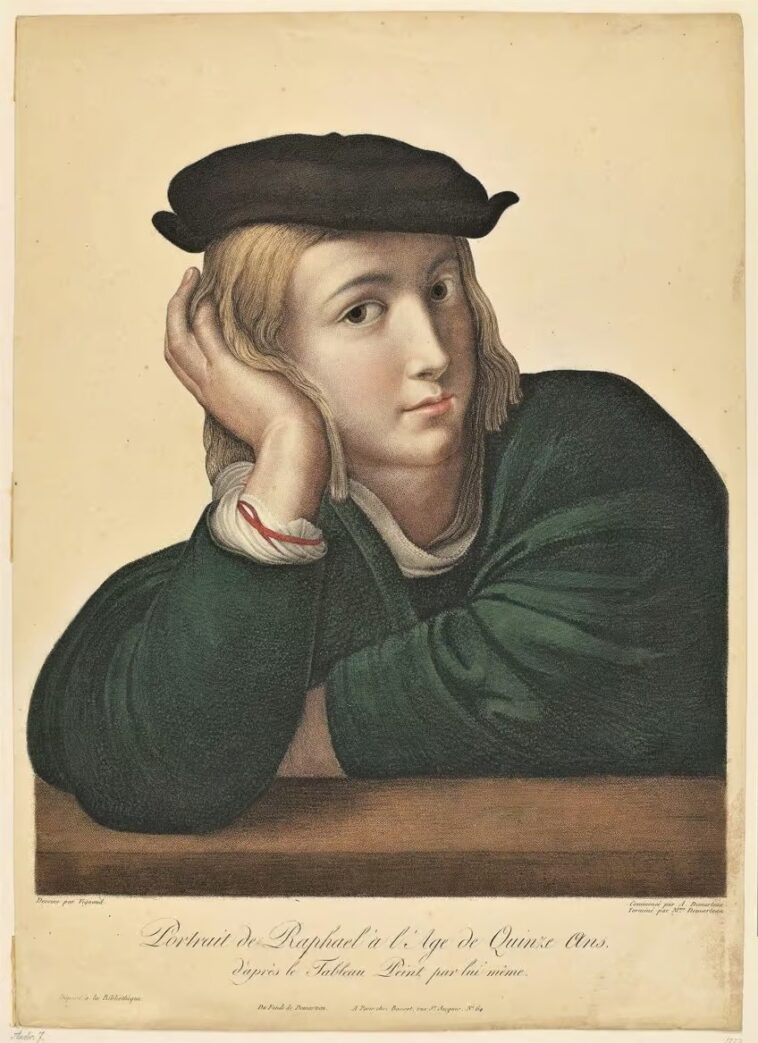Raffaello Sanzio da Urbino, universally known as Raphael, was an iconic figure in the realm of Italian art and architecture. Born on either April 6 or March 28, 1483, and having died on April 6, 1520, he significantly influenced the High Renaissance period. His works are highly regarded for their precision of form, fluidity in composition, and the attainment of the Neoplatonic concept of human excellence. Alongside Michelangelo and Leonardo da Vinci, Raphael is considered one of the seminal masters of this era, forming what is traditionally referred to as the "artistic trinity" of the High Renaissance.
Early Life and Upbringing
Born in Urbino, Italy, Raphael grew up in an environment saturated with artistic and cultural heritage. His father, Giovanni Santi, a court painter for the Duke of Urbino, played a pivotal role in fostering his early artistic inclinations. However, Raphael's childhood was marred by tragedies, losing both parents at a young age—his mother in 1491 and his father in 1494. Despite the setbacks, he embarked on an artistic career, apprenticing under Pietro Perugino.
Artistic Formation and Influences
Under Pietro Perugino's guidance, Raphael imbibed the techniques and perspectives that shaped early Renaissance art. Furthermore, the influence of Leonardo da Vinci and Michelangelo became evident in his works, particularly in the rendering of human anatomy and dynamic poses. This melange of influences and styles positioned Raphael as a versatile artist who contributed significantly to the furtherance of High Renaissance art.
Signature Works and Artistic Techniques
Raphael's artistic portfolio is studded with landmark works like "The School of Athens," "Sistine Madonna," and "Transfiguration." These masterpieces are revered for their structural clarity, compositional balance, and intricate use of color, light, and shadow. Raphael's approach was revolutionary for his time and continues to be scrutinized and admired in academic circles.
Architectural Contributions
Beyond painting, Raphael also made substantial contributions to architecture. Appointed as the Chief Architect for St. Peter’s Basilica following Donato Bramante's demise, he infused his architectural designs with the balance and harmony that were characteristic of his paintings.
Incorporation of Neoplatonic Ideals
Raphael’s works are notable for embodying the Neoplatonic principles, which placed a high value on idealized beauty and the interconnectedness of the intellectual and spiritual realms. His works effortlessly translate these philosophies into visual form, creating an elevated portrayal of human grandeur.
Lasting Legacy and Cultural Impact
Although Raphael’s life was tragically cut short at the age of 37, his influence did not wane. His artistic contributions have been rigorously studied, replicated, and admired, solidifying his reputation as a grand master of the High Renaissance. His legacy has seeped into subsequent art movements, and his works are prominently featured in world-renowned museums and institutions.
The Traditional Trinity: Raphael, Michelangelo, and Leonardo da Vinci
When discussing the High Renaissance, it is customary to mention Raphael alongside Michelangelo and Leonardo da Vinci. Known collectively as the traditional trinity, these artists redefined the boundaries of art and science, laying down new paradigms that continue to influence the world today.
In summary, Raphael remains an enduring figure in the annals of art and architecture. His mastery in various forms of artistic expression, his embodiment of Neoplatonic ideals, and his indelible influence on subsequent generations make him a focal point in the history of High Renaissance art. Despite his short lifespan, the impact of his works is expansive and continues to resonate today.





